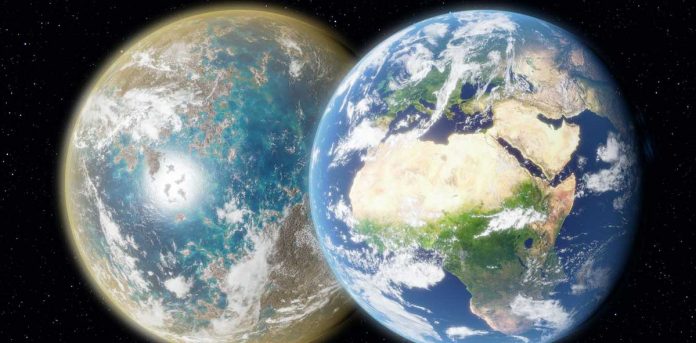According to a new research, published in the Proceedings of the National Academy of Sciences, the development of life on Earth may have influenced by iron deficiency billions of years ago and this may have stimulated evolution. The rising and falling levels of iron on Earth had an influence upon building complex organisms to evolve from simpler forebears.
Other planets in our solar system such as Mercury, Venus, Earth and Mars have various amounts of iron in the layer below the outermost planetary crust, rocky mantles. Mercury has the least amount of iron. Mars has the higher amount. This difference is tempted by the planet’s distance from Sun. The amount of iron also depends on the different conditions under which the planets has formed their own metallic and iron-rich cores.
The amount of iron in the mantle in the planet is regulated by several planetary processes such as the retention of surface water. Without water life could not exist. Astronomical observations of various solar systems have equipped scientists to estimate a planet’s mantle iron. This has helped them to understand a planet’s capability to harbour life.
With planetary habitability, iron is also important for the biochemistry that allows life to happen. Iron contains a combination of properties that enables it to form chemical bonds in multiple orientations. Iron works as a medium in many biochemical processes in cells. Mostly iron enables catalysis that speeds up chemical reactions. Metabolic processes like DNA synthesis and cellular energy generation are vital life process that relies on iron.
Scientists calculated the amount of iron in Earth’s seas over billions of years. They have come to a conclusion of how enormous amounts of iron falling out of the seas have affected evolution.
Iron in various ages
4 billion years ago the formation of geochemistry evolving into biochemistry took place. Scientists have proven that iron plays a pivotal role in these processes. The conditions of early Earth were very different than it is now. In the beginning there was no oxygen in Earth’s atmosphere and iron was easily soluble in water as “ferrous iron”. The abundance of iron in the Earth’s early seas has evolved life. But this “ferrous paradise” did not last longer.
The Great Oxygenation Event caused oxygen to appear in the atmosphere of Earth. This happened around 2.43 billion years ago. The presence of oxygen caused a profound loss of soluble iron from the surface waters and upper oceans of Earth. 800 to 500 million years ago another “oxygenation event” named Neoproterozoic has happened. The event caused oxygen concentrations yet higher. After these two events, oxygen got combined with iron and “ferric iron” dropped out of ocean waters and turned unavailable to most lifeforms.

The loss of soluble iron had serious consequences for the evolution of life. “siderophore” is a small molecule produced by various bacteria that captures oxidised iron. Siderophores became more useful after oxygenation. Siderophores enabled organisms to assimilate iron from minerals that was containing oxidised iron. Siderophores helped in stealing iron from other organisms like bacteria. Organisms stopped acquiring iron from the environment and began stealing it from other lifeforms. This caused a competitive interaction between pathogens and their hosts. For this reason, both parties continued to evolve and attacked and defended their iron resources. This competitive drive caused increasingly complex behaviour which resulted in more advanced organisms.

